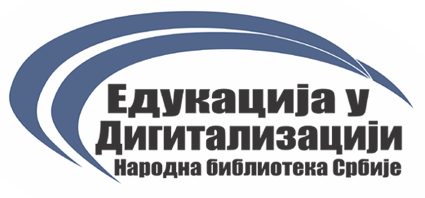Solar panels are much cheaper to purchase and install over the past decade. Since 2010, the average price of solar panels has decreased by 70 percent. This is due to advances in technology, increased production, economies of scale, and less expensive costs. Incentives and tax credits are available by numerous states and countries to encourage the use of solar energy. These incentives and tax credit are available at all levels of government, including local, state and federal levels.
Some of the most sought-after incentives and tax credits are:
Federal Investment Tax Credit (ITC) is a federal tax credit that permits homeowners or businesses to deduct 26% the cost for the installation of a solar energy system from their federal tax.
State and local tax credits: Many states and localities provide tax credits or exemptions for solar energy systems. These tax credits can be used to exempt sales or property taxes. There may be specific qualifications for the credit.
Net Energy Measurement (NEM: NEM allows homeowners or businesses to earn credit when they produce excess solar energy, and then bring it back to the grid. This helps offset the cost of electricity not being produced by solar panels.
Rebates Certain utilities and states provide rebates to install solar systems. These rebates can reduce the cost of installation.
Grants: Grants may be given by certain state or organization to assist in the installation of a solar energy systems. These grants could be restricted in funding or eligibility requirements.
Solar Renewable Energy Certificates (SRECs) Also known as solar renewable energy certificates, are credits that are able to assist utilities in meeting their goals for renewable energy. SRECs can be earned by solar energy-generating homeowners and businesses and sold for an additional source of income.
It's important to note that tax credits can change over time and may also have certain eligibility requirements. It is a good idea research the tax incentives and tax credits available in your local area and talk to a certified tax professional to learn what they are and how they apply to your specific situation.
The exact cost of buying solar panels will depend on factors like the size and power of the panels, their location of installation and the installer's fees. With the decreasing prices homeowners can expect to recover their investment in solar panel in the next few years thanks to lower electricity costs and other benefits.
The cost-effectiveness of solar panels is contingent upon the specific circumstances of the person. The positive side is that solar technology is getting more readily available and affordable and therefore, it's an option worth considering. View the top solar panels hints for blog info including solar panel roads, solar cell is made up of, solar png, 160 watt solar panel price, highest watt solar panel, pvwatts, solar setup, kaco inverter, portable solar panels for rv, power inverter for solar panels, and more.

How To Pick The Best Geothermal System To Fit Your Home
There are many factors that go into choosing the proper kind and size of geothermal system to install in your house. These include the dimensions and location of your house along with the heating and cooling requirements of your residence along with the soil and groundwater conditions, as well as the condition of the groundwater and soil in your home. There are several steps to follow to determine which type of geothermal system is suitable for your home. The calculation takes into account aspects like the size and layout of your home along with the number of residents and the climate of your locality, and the gender and number of the residents.
Examine the condition of your property. To determine if it is suitable for a geothermal system it is important to evaluate the soil conditions and groundwater conditions. The performance of a geothermal system can be affected by the type of soil or type, groundwater level, as well as the depth of the bedrock.
Consider the type of geothermal system. There are two main kinds of geothermal systems that are open-loop and closed-loop. Closed loop systems circulate a fluid underground using pipes. Open-loop systems rely on groundwater as heat exchange fluid, Based on the configuration of the ground, closed-loop system can be further divided into horizontal, vertical and lakes and ponds.
It is crucial to identify the initial costs as well as the operating costs. Prices for installing geothermal heating will differ depending on the type of system you choose as well as the size of your home and other factors. It is crucial to take into consideration both the initial costs as well as the ongoing operating costs which include maintenance and repair expenses, when you are evaluating the total expense of a geothermal unit.
Ask a geothermal consultant: A geothermal contract can assess your home as well as determine your cooling and heating requirements, and suggest the most appropriate geothermal system. It is important that you choose a contractor who has experience installing geothermal systems, and is well-versed in local laws and incentives.
These steps, along with the help of a geothermal professional who is certified will allow you to determine the most suitable geothermal system for your home. Additionally, you'll enjoy the energy savings and environmental benefits associated with this renewable energy source. Follow the most popular continue on geothermal energy for more info including main source of geothermal energy, geothermal power, dandelionenergy, types of geothermal energy, geothermal energy, closed loop geothermal heat pump, pln geothermal, solar energy geothermal energy water and wind energy are, geothermal unit cost, five direct uses of geothermal energy, and more.
[img]https://i.guim.co.uk/img/media/2feb72f7f5013d88a579f75191e4029efdd4d904/0_400_6000_3600/master/6000.jpg?width\u003d465\u0026quality\u003d85\u0026dpr\u003d1\u0026s\u003dnone[/img]
How Many Houses Can A Wind Turbine Power? How Does It Differ?
The amount of homes that could be powered by one wind turbine is contingent on several factors, including the size of the turbine, the wind speed at the site, and the energy consumption of the homes being served.On average, a modern wind turbine with a capacity of between 2 and 3 megawatts (MW) will generate enough power to provide power to up to 990 homes per year in the event of that the average wind speed is 15 miles per hour (24 kilometers per hour).
It is vital to be aware that the speed of wind can fluctuate significantly from day-to-day and even hourly, which may affect the amount of electricity generated by turbines. Additionally, the energy consumption of homes can differ based on many factors, including the size of the house as well as the number of residents, and the energy effectiveness of lighting and appliances.
A variety of factors will determine the amount of homes which can be powered by wind turbines. This could vary between installations.
What are the Factors that influence the cost of a Wind Turbine?
The cost of a turbine could be determined by a number of variables.
The size of the turbine is important. The more powerful the turbine, it will cost more. The larger turbines are typically more expensive because they require larger towers, longer blades, and stronger support structures.
Capacity is the capacity of an engine. It is the amount of power it generates. Turbines with greater capacities tend to be more expensive.
Where it is installed will affect the cost of a wind turbine. Factors like accessibility, local regulations, and the cost of transporting equipment and other materials could influence the overall cost.
Installation costs: These cover the costs for the preparation of the site, the construction of the tower, and the installation of the turbine and blades. These costs can vary depending upon how complicated the installation process is as well as the amount of local labour and tools is available.
Maintenance costs: Wind turbines need regular maintenance to allow them to operate safely and effectively. Routine inspections, repairs and replacement of components are just a few possible costs of maintenance.
Financing and incentives There are a variety of variables that impact the price of financing the purchase of a turbine. This includes rates of interest, the terms of loans, tax credits, and whether there are incentives or tax credit. Production Tax Credit (PTC), Investment Tax Credit, (ITC) can be used to offset the cost of a windturbine. Read the most popular wind power advice for site info including orsted wind, best residential wind turbine 2019, turbine cost, wind generator price, harmony wind turbines, diy vertical axis wind turbine, best wind turbine design, wind energy system, noblesfontein wind farm, windmill electric generator, and more. from full report for solar power and more.



